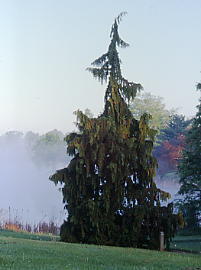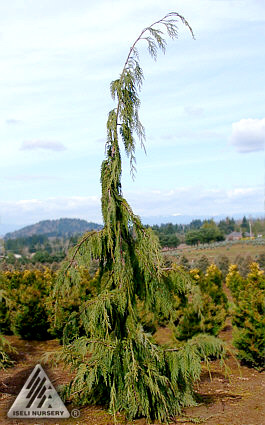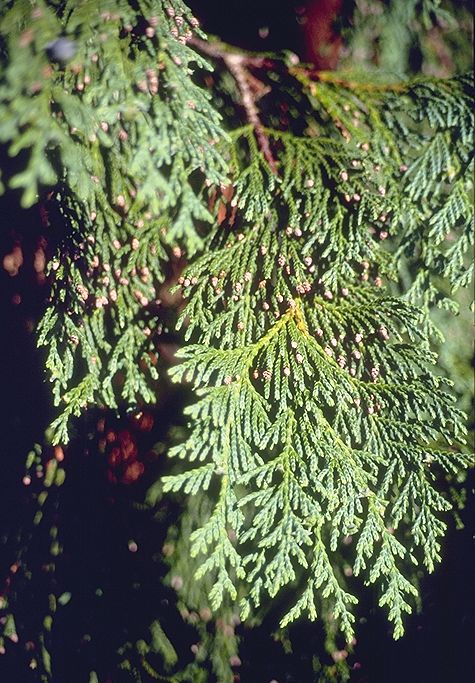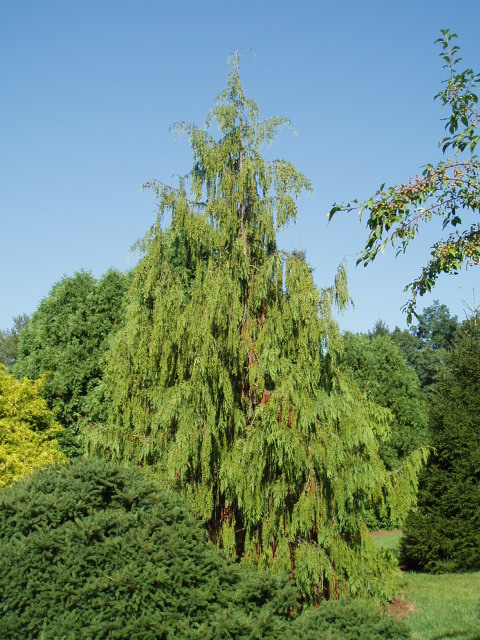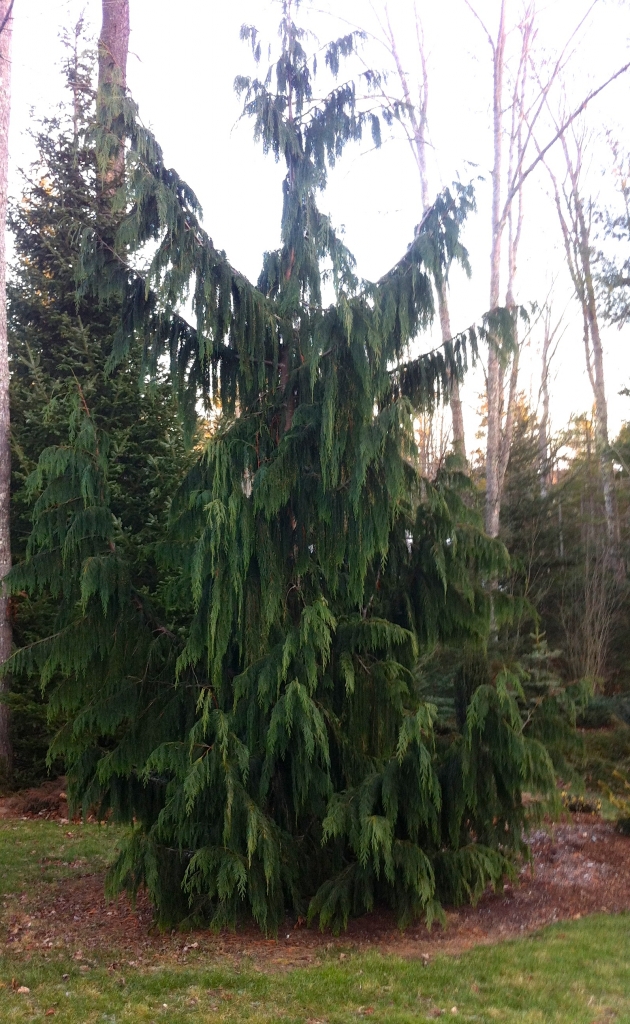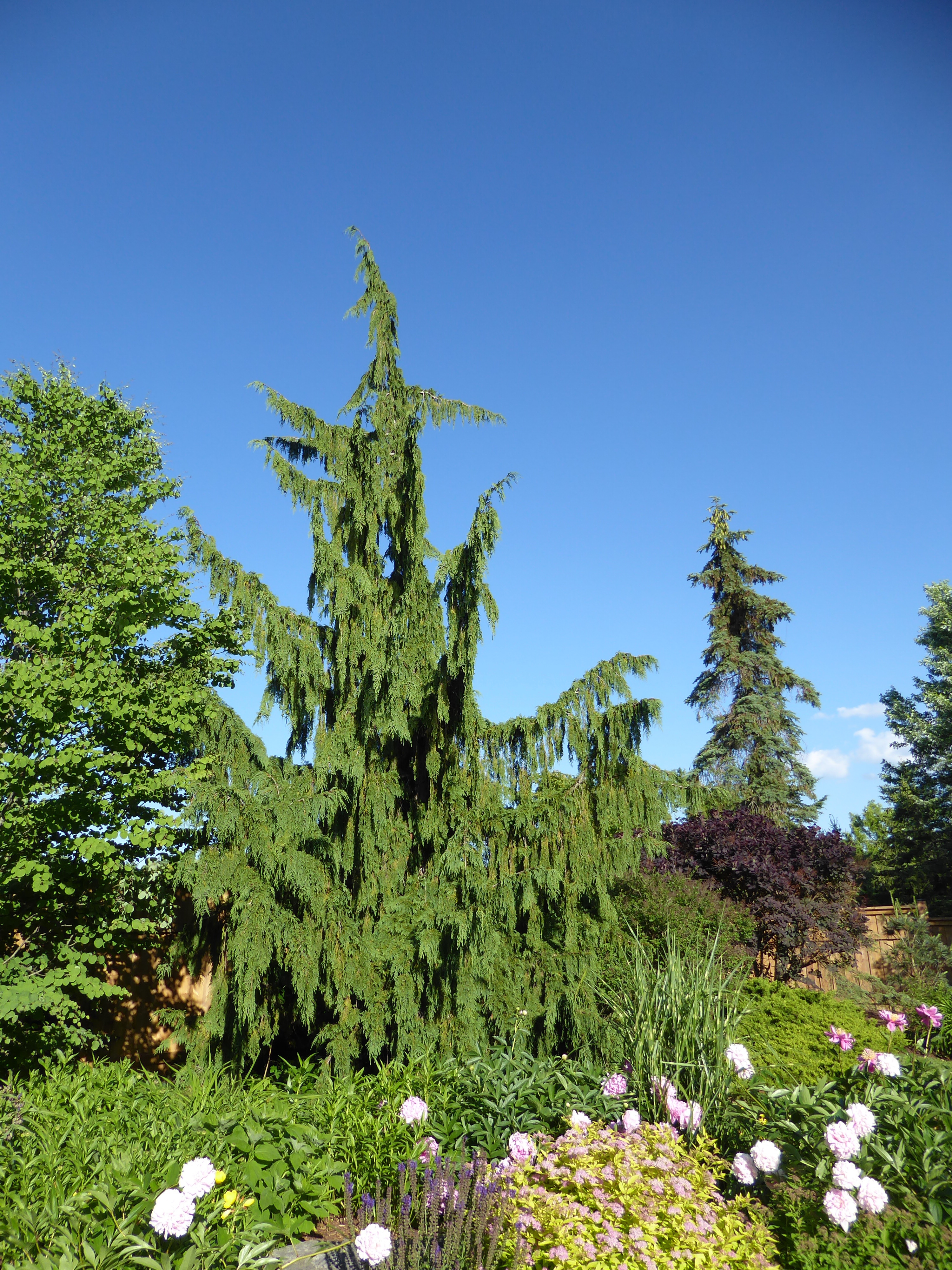Cupressus nootkatensis 'Pendula' is a full-sized, tree form of Nootka cypress with graceful pendulous branches that sweep upwards at the ends. Many forms of this tree are available from narrower to broader forms. When well sited, this cedar is fast growing and may easily add one or more feet (30 cm) in height and width per year.
Since this weeping cultivar is one of the most popular of Nootka cypresses, it bears repeating that is currently some dispute over its classification. It was first described in 1824 as Cupressus but in 1841 it was transferred to Chamaecyparis because of its flattened sprays of foliage. It remained there until the beginning of this century when genetic evidence strongly suggested that it should be returned to Cupressus. This cultivar was first introduced to the nursery trade in the early 1880s by A. van Leeuwen Nursery, Naarden, The Netherlands.
In 2002, however, the widely respected taxonomist from the RHS/Kew, Aljos Farjon, made a case that it be transferred to Xanthocyparis. This was based on the discovery of a new species in Vietnam, Xanthocyparis vietnamensis which had strong similarities to nootkatensis. This evidence hasn't been accepted by all authorities, let alone the nursery trade. Some arboretums are currently listing this species as a synonym for the new classification as Xanthocyparis. In the meantime, the Vietnamese cypress has since been redescribed in to Cupressus.
Therefore, the consumer is still likely to encounter this species (cultivar) under its older name, Chamaecyparis nootkatensis 'Pendula' as well as yellow cedar, Alaskan blue cedar and weeping blue cedar (when, in fact, it's not a cedar) as well as various weeping cypresses. It's a lovely tree and doesn't deserve this kind of abuse by quarreling taxonomists and plant pedants.
